Click here for PowerPoint

Drawing upside down is a favourite exercise of mine. It trains your eyes to really see. You examine the length of a line, the curve in a line, distances from other lines, it's an excellent practice to perform.
You can do this with any line drawing or contour drawing.
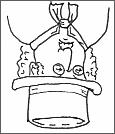
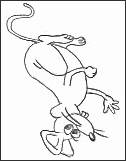
I've put a couple of line drawings on this page if you would like to copy one right now.
Try to take notice of how your mind "turns off." Your academic brain doesn't recognize what it is you are drawing, so it hands the job over to the artistic side of your brain.
Ah, pure peace reigns. You will most likely notice the peaceful calm that takes over.
As with most exercises, if you're intimidated by a picture, try placing paper over the picture and just reveal one portion at a time. You'll only need to do this once or twice. When your confidence builds, you won't even notice the whole picture, you will only be seeing the lines you are copying.
That's the purpose of the upside down drawing exercise - to develop your ability to see only lines and shapes and their relation to each other.
You are not meant to recognize what the drawing is about. At all costs, avoid naming objects and your drawing skills will improve.
Copy the drawing just as you see it and don't be tempted to turn it the right side up at any time throughout the exercise. You can start anywhere on your page that you feel comfortable with.
It is fine if you wish to erase. Sometimes our judgment is a little bit out. Sometimes my hand has a mind of its own and it draws a line that I don't agree with!
Practice upside down drawing by copying images from any art books, photos, etc. that you have. Most of all, have fun!
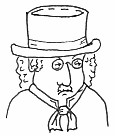
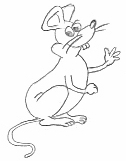
Right Brain / Left Brain: What Is It All About?
Taken from http://painting.about.com/od/rightleftbrain/a/Right_Brain.htm
The concept of right brain and left brain thinking developed from the research in the late 1960s of an American psychobiologist Roger W Sperry. He discovered that the human brain has two very different ways of thinking. One (the right brain) is visual and processes information in an intuitive and simultaneous way, looking first at the whole picture then the details. The other (the left brain) is verbal and processes information in an analytical and sequential way, looking first at the pieces then putting them together to get the whole. Sperry was awarded a Nobel Prize in 1981, although subsequent research has show things aren't quite as polarized as once thought (nor as simple).
While we have a natural tendency towards one way of thinking, the two sides of our brain work together in our everyday lives. The right brain of the brain focuses on the visual, and processes information in an intuitive and simultaneous way, looking first at the whole picture then the details. The focus of the left brain is verbal, processing information in an analytical and sequential way, looking first at the pieces then putting them together to get the whole.
| Right Brain Inventory |
Left Brain Inventory |
| • Visual, focusing on images, patterns |
• Verbal, focusing on words, symbols, numbers |
| • Intuitive, led by feelings |
• Analytical, led by logic |
| • Process ideas simultaneously |
• Process ideas sequentially, step by step |
| • 'Mind photos' used to remember things, writing things down or illustrating them helps you remember |
• Words used to remember things, remember names rather than faces |
| • Make lateral connections from information |
• Make logical deductions from information |
| • See the whole first, then the details |
• Work up to the whole step by step, focusing on details, information organized |
| • Organization ends to be lacking |
• Highly organized |
| • Free association |
• Like making lists and planning |
| • Like to know why you're doing something or why rules exist (reasons) |
• Likely to follow rules without questioning them |
| • No sense of time |
• Good at keeping track of time |
| • May have trouble with spelling and finding words to express yourself |
• Spelling and mathematical formula easily memorized |
| • Enjoy touching and feeling actual objects (sensory input) |
• Enjoy observing |
| • Trouble prioritizing, so often late, impulsive |
• Plan ahead |
| • Unlikely to read instruction manual before trying |
• Likely read an instruction manual before trying |
| • Listen to how something is being said |
• Listen to what is being said |
| • Talk with your hands |
• Rarely use gestures when talking |
| • Likely to think you're naturally creative, but need to apply yourself to develop your potential |
• Likely to believe you're not creative, need to be willing to try and take risks to develop your potential |
Sometimes we get stuck in a rut and we can only see a thing in one way. When we think of drawing an object, most of us automatically think of the contours: the lines.

Today we’re going to focus on drawing shapes, not lines.
Challenging yourself to see things in a new way is beneficial for several reasons:
- it keeps your brain flexible and open to new ideas
- it can help get you out of a rut you didn’t even realize you were in
- it can give you another technique to use in your other art pieces.
For this kind of drawing it’s best to use a piece of charcoal turned on its side. This gives you a larger drawing tool, making it easier toshade in big areas and reducing the temptation to draw lines.
Always start by drawing the biggest shapes. Work from the general to the specific, adding details only at the end.

Another way to approach this exercise is to look at the negative space. Negative space is what surrounds the object your’e drawing. Focus on drawing the shapes of the areas around your subject and see how the object starts to form.

As you practice and become more confident in drawing without lines, you can start to integrate the technique into the rest of your work. You might even find that you like using a combination of different drawing techniques. This kind of variety can add another layer of interest to your work.

An artist has two tool boxes: the physical one that holds his pencils, brushes, etc, and the mental one that holds his ideas and techniques. Try this drawing technique and add another tool to your mental tool box!
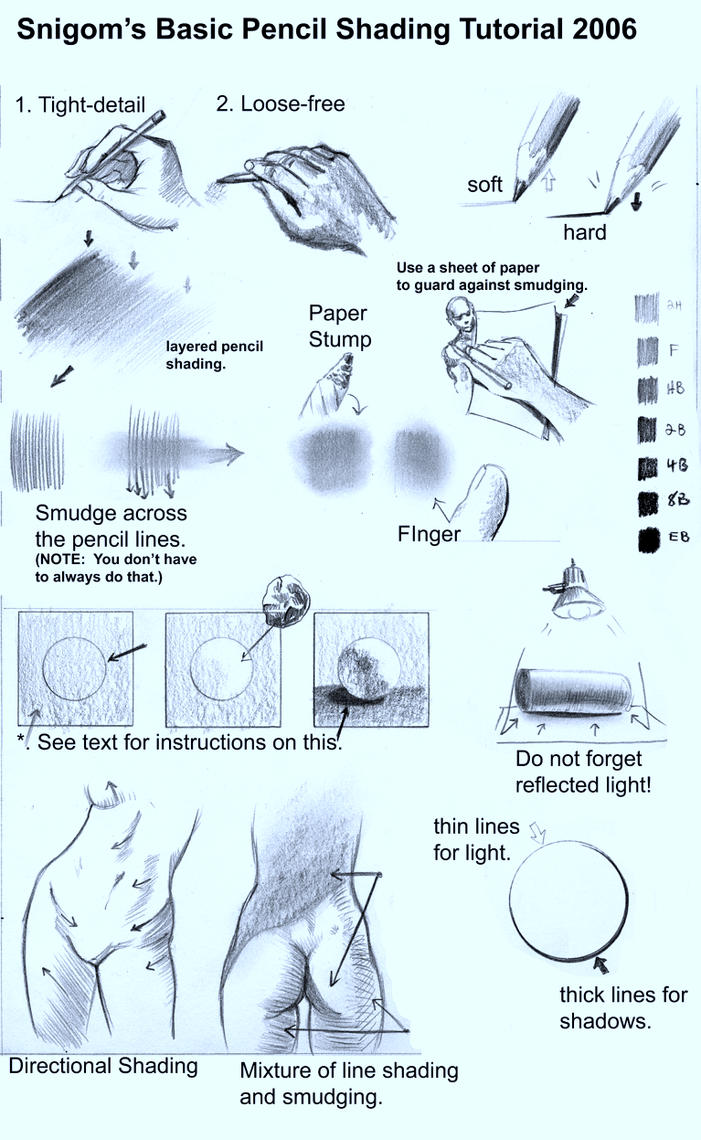
Comments (0)
You don't have permission to comment on this page.